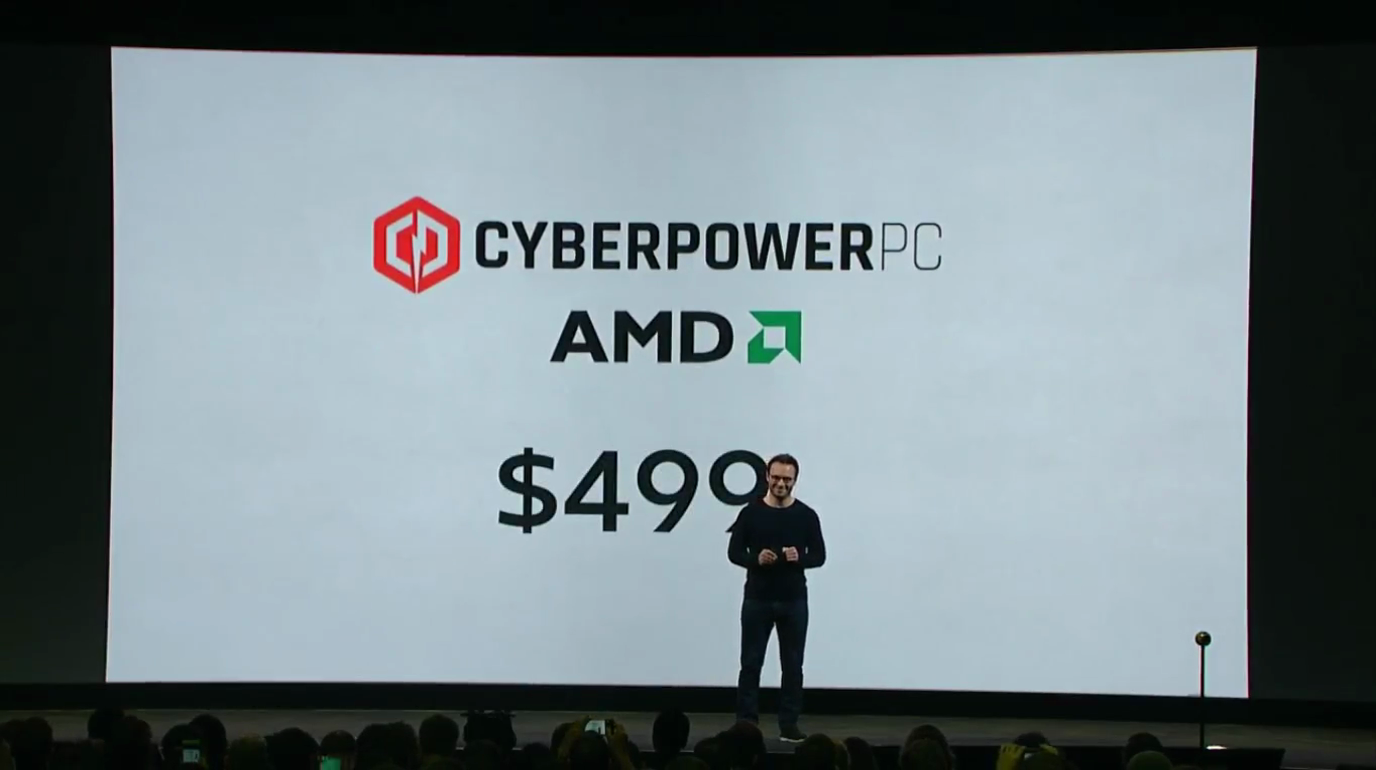Keeping games chugging along at 90 frames per second (fps) while rendering modern graphics is a tall order, which is why building a VR-ready computer is pretty much impossible with less than $600. Well, now the minimum spec—at least for Oculus—seems to be a little more affordable, more so than their previously stated GTX 970 – Core i5 4590 ‘recommend spec’ that is.
Announced today on stage at Oculus Connect 3, the company’s annual developers conference, CEO Brendan Iribe revealed a new feature that the company says will help lower-end systems get into VR.
Oculus’s new minimum spec is in large part due to asynchronous spacewarp, a sort of ‘sequel’ to asynchronous timewarp, a technique unveiled at last year’s Connect to reduce judder and deliver consistently low latency.
But as Iribe says “timewarp is great, but it’s not a silver bullet. It’s great for looking around, but it doesn’t work for positional movement.”
Asynchronous spacewarp is Oculus’s new solution to fix judder caused by positional movement in the playspace. As explained by Iribe, spacewarp takes the app’s two previous frames and analyzes the difference, and then calculates that difference to extrapolate and generate a new synthetic frame. This helps smooth moving objects, even the entire scene, so when you’re moving your hands or body, you won’t have judder or ghosting images. In short, it does this by halving the app’s framerate to 45 fps when it hits a snag and sandwiches in a synthetically generated frame to return it to 90.
This, he says, makes it easier for lower-end machines to power VR experiences, principally because it’s built into the runtime, and hence every app on Oculus Home.
The company worked with AMD and Nvidia, making the spacewarp available to both GPU manufacturers.
“This will expand the audience. With lower CPU and GPU requirements, people can get into VR at a lower cost, on a wider range of hardware,” said Iribe.
Is Min-Spec Oculus Ready, or Just VR-Ready?
There’s no word from Oculus yet whether they’ll be retaining the recommended spec despite the new minimum, but they have struck a deal with Cyberpower PC to produce a new, AMD-based ‘min-spec PC’ for $499.
Now, Iribe says, Oculus has worked with 11 partners to certify over 40 ‘Oculus Ready’ machines, lowering last year’s median price of $1,000 down to “less than $700.”
“Less than $700” however isn’t specifically $499, so we’ll have to wait and see whether the new ‘min-spec PC’ will carry the ‘Oculus Ready’ badge or not.










